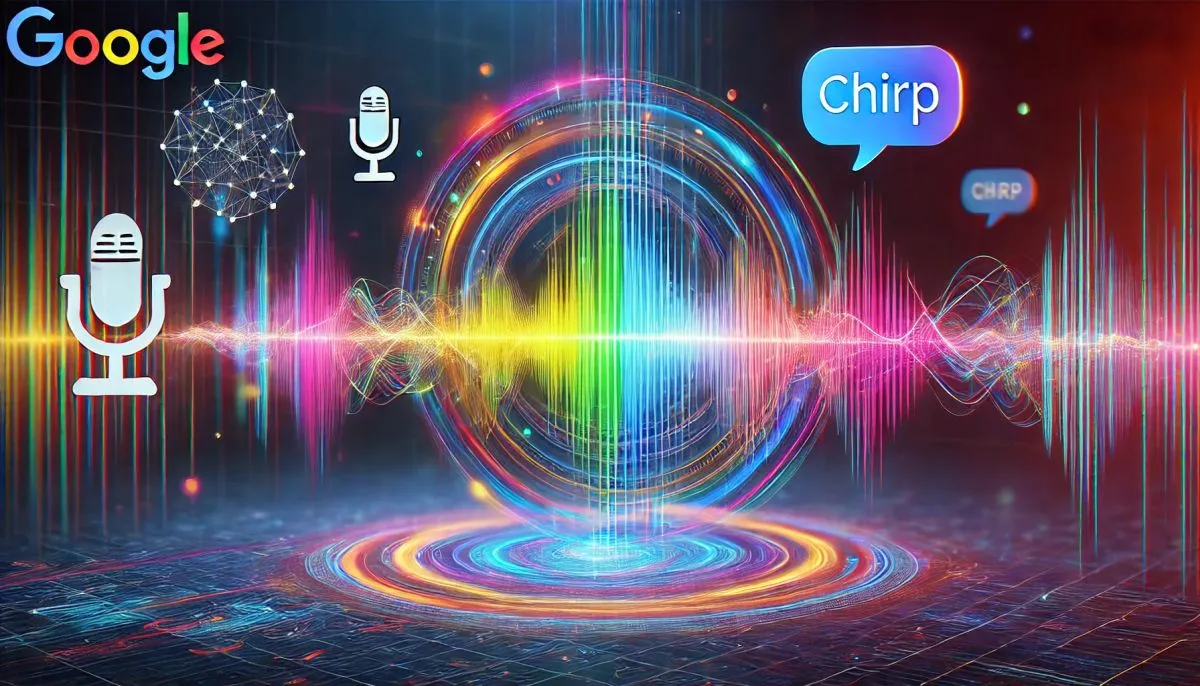最近研究了多套語音轉文字的模型,今天這篇文章我打算來分享一套由 Google 發展的 Chirp 通用語音模型 (Google USM),該模型能夠在單一模型中統一處理多種語言的數據,且主要用來處理短音頻(小於1分鐘)和長音頻(1分鐘至8小時)的應用情境。

Chirp 模型的一大亮點是其支援語言無關的音頻轉錄功能,能夠自動推斷音頻文件中的口語語言並將其添加到結果中,這對於處理多語言環境下的語音識別任務具有重要意義。此外,Chirp 2 還支援自動標點和詞時間戳等實用功能,進一步提升了轉錄結果的可讀性和實用性。
接下來我會帶大家走一遍 Chirp 模型的使用方式:
1. 初始化 Google Cloud 環境
開始的步驟比較麻煩,需要對 Google Cloud 環境有點認識才有辦法設定好:
-
你要先建立一個 Google Cloud Console 的專案
-
再到 專案選擇器 選擇一個現有的專案
-
還必須確保你的 Google Cloud 專案已啟用計費
-
最後還要手動啟用 Cloud Speech-to-Text API API 才能開始使用 Chirp 服務
-
如果你不是管理者,可能要請人幫你授權 Cloud Speech Administrator 角色
-
安裝 gcloud 命令列工具 (Install the gcloud CLI)
-
初始化 gcloud CLI 執行環境
gcloud init
-
以系統管理員權限開啟另開一個 Command Prompt 視窗並執行更新命令
gcloud components update
-
建立本地認證憑證 (ADC)
gcloud auth application-default login
這個命令可以讓你取得應用程式預設憑證 (Application Default Credentials),簡稱 ADC 的東西,他可以讓你之後的程式都不需要特別處理金鑰或認證等設定,讓你輕鬆地對 Google API 進行身份驗證並向這些 API 發送請求,可以大幅簡化應用程式的開發流程。
如果你使用 Cloud Shell 操作的話,就不需這一步驟,因為 ADC 已經內建。
2. 建立 Python 虛擬環境
在命令提示字元中執行以下指令來建立一個 Python 虛擬環境:
python -m venv .venv
若使用 Visual Studio Code 開發環境,也可以透過 VS Code 的 GUI 介面建立虛擬環境。詳情請見: Python environments in VS Code 文件的 Creating environments 小節。
啟動虛擬環境:
3. 安裝必要套件
Chirp 被整合在 Google Cloud 的 Speech-to-Text API v2 之中,所以我們需要安裝 google-cloud-speech 套件。在 Python 虛擬環境中,可以使用 pip 安裝:
pip install --upgrade google-cloud-speech
Speech-to-Text client libraries
建立 requirements.txt 檔案:
pip freeze > requirements.txt
4. 撰寫 Chirp 程式碼
Chirp 主要提供兩種用法:
-
Synchronous speech recognition
適用於短音頻片段 (最多 60 秒的音頻),可立即返回轉錄結果。
同步語音辨識可以轉錄本機上傳的 WAV 檔案或是儲存在 Cloud Storage 的音訊。
注意: 提供超過 60s 或 10MB 的音頻會導致 API 返回錯誤,詳見 quotas and limits 說明。
-
Batch speech recognition
適用於長音頻片段 (超過 60 秒的音頻),以透過非同步方式進行轉錄,但非同步語音辨識的上限 為 480 分鐘 (即 8 小時)。
批次語音辨識僅能轉錄儲存在 Cloud Storage 的音訊。
以下我直接列出一段完整的 Python 原始碼,示範「同步語音辨識」的轉錄方法,原始碼放入 main.py 檔案就可以執行:
import os
from google.api_core.client_options import ClientOptions
from google.cloud.speech_v2 import SpeechClient
from google.cloud.speech_v2.types import cloud_speech
PROJECT_ID = os.getenv("GOOGLE_CLOUD_PROJECT")
def transcribe_chirp_auto_detect_language(
audio_file: str,
region: str = "us-central1",
) -> cloud_speech.RecognizeResponse:
"""Transcribe an audio file and auto-detect spoken language using Chirp.
Please see https://cloud.google.com/speech-to-text/v2/docs/encoding for more
information on which audio encodings are supported.
Args:
audio_file (str): Path to the local audio file to be transcribed.
region (str): The region for the API endpoint.
Returns:
cloud_speech.RecognizeResponse: The response containing the transcription results.
"""
# Instantiates a client
client = SpeechClient(
client_options=ClientOptions(
api_endpoint=f"{region}-speech.googleapis.com",
)
)
# Reads a file as bytes
with open(audio_file, "rb") as f:
audio_content = f.read()
config = cloud_speech.RecognitionConfig(
auto_decoding_config=cloud_speech.AutoDetectDecodingConfig(),
# Set language code to auto to detect language.
language_codes=["auto"],
model="chirp",
)
request = cloud_speech.RecognizeRequest(
recognizer=f"projects/{PROJECT_ID}/locations/{region}/recognizers/_",
config=config,
content=audio_content,
)
# Transcribes the audio into text
response = client.recognize(request=request)
for result in response.results:
print(f"Transcript: {result.alternatives[0].transcript}")
print(f"Detected Language: {result.language_code}")
return response
def transcribe_chirp(
audio_file: str,
language_code: str = "en-US",
region: str = "us-central1",
) -> cloud_speech.RecognizeResponse:
"""Transcribes an audio file using the Chirp model of Google Cloud Speech-to-Text API.
Args:
audio_file (str): Path to the local audio file to be transcribed.
Example: "resources/audio.wav"
language_code (str): The language code to use for transcription.
Default is "en-US".
region (str): The region for the API endpoint.
Default is "us-central1".
Returns:
cloud_speech.RecognizeResponse: The response from the Speech-to-Text API containing
the transcription results.
"""
# Instantiates a client
client = SpeechClient(
client_options=ClientOptions(
api_endpoint=f"{region}-speech.googleapis.com",
)
)
# Reads a file as bytes
with open(audio_file, "rb") as f:
audio_content = f.read()
config = cloud_speech.RecognitionConfig(
auto_decoding_config=cloud_speech.AutoDetectDecodingConfig(),
language_codes=[language_code],
model="chirp",
)
request = cloud_speech.RecognizeRequest(
recognizer=f"projects/{PROJECT_ID}/locations/{region}/recognizers/_",
config=config,
content=audio_content,
)
# Transcribes the audio into text
response = client.recognize(request=request)
for result in response.results:
print(f"Transcript: {result.alternatives[0].transcript}")
return response
def main():
"""
示範如何先偵測語言,再根據偵測結果進行轉錄
"""
audio_file = "audio_files/開啟 Google 瀏覽器.wav"
print("步驟 1: 偵測音訊檔案的語言...")
detect_response = transcribe_chirp_auto_detect_language(audio_file)
# 從偵測結果中獲取語言代碼
detected_language = None
if detect_response.results:
detected_language = detect_response.results[0].language_code
print(f"偵測到的語言: {detected_language}")
else:
# Speech-to-Text V2 supported languages
# https://cloud.google.com/speech-to-text/v2/docs/speech-to-text-supported-languages
print("無法偵測語言,使用預設語言 (cmn-Hant-TW)")
detected_language = "cmn-Hant-TW"
detected_language = "en-US"
audio_file = "audio_files/Open Google Chrome.wav"
print("\n步驟 2: 使用指定的語言 en-US 進行精確轉錄...")
transcribe_response = transcribe_chirp(
audio_file,
language_code=detected_language
)
detected_language = "cmn-Hant-TW"
audio_file = "audio_files/開啟 Google 瀏覽器.wav"
print("\n步驟 3: 使用指定的語言 cmn-Hant-TW 進行精確轉錄...")
transcribe_response = transcribe_chirp(
audio_file,
language_code=detected_language
)
print("\n轉錄完成!")
return transcribe_response
if __name__ == "__main__":
main()
執行 main.py 程式碼:
python main.py
你應該會看到類似以下的輸出:
步驟 1: 偵測音訊檔案的語言...
Transcript: 开 启 流 览 器
Detected Language: zh-Hans
偵測到的語言: zh-Hans
步驟 2: 使用指定的語言 en-US 進行精確轉錄...
Transcript: open google chrome
步驟 3: 使用指定的語言 cmn-Hant-TW 進行精確轉錄...
Transcript: 開啟流器
轉錄完成!
5. 結語
這篇文章我介紹了 Google Cloud 的 Chirp 通用語音模型,並示範了如何使用 Python 語言進行語音轉文字。
我自己實測的結果,發現「英文」的識別率非常高,而「中文」的識別率則相對較低,且叫無法區分不同地區的口音。你應該可以從結果發現,該模型雖然宣稱 Universal speech model (USM) (通用語音模型) 可以處理多種語言,但在實際應用中,還是對於台灣這邊的口音,辨識率依然不高,會自動辨識為簡體中文(zh-Hans)。另外一個問題是,台灣人講話很喜歡用晶晶體說話,也就是很喜歡夾雜著中、英文混著說,而這種語音在 Chirp 的辨識率依然非常低,大部分時候會直接濾掉英文的部分。
不過,Google 對 USM 野心很大,目前他們已經用了 1,200 萬小時的語音檔進行自監督訓練,在一百多種語言微調了 280 億個句子,訓練出了一個 2B 參數的模型。其實 2B 其實蠻小的,要處理這麼多的語言,我覺得還是相當困難。這個 Chirp 模型雖然可以處理多種語言的語音,但在實際應用中,還是有很多問題需要解決,尤其是多語言的語音辨識部分,期待未來 Google 的語音技術可以解決這些問題,希望有一天可以不用再打字了!😄
本篇文章完整的原始碼我已經放在 GitHub 上,歡迎大家參考: https://github.com/doggy8088/vertext-ai-chirp
下載專案後的初始化命令為:
git clone https://github.com/doggy8088/vertext-ai-chirp
cd vertext-ai-chirp
python -m venv .venv
pip install -r requirements.txt
# Add .env file and set "GOOGLE_CLOUD_PROJECT" environment variable that point to your Google Cloud Project ID
# Example: GOOGLE_CLOUD_PROJECT=vertex-ai-sprint
python main.py
相關連結